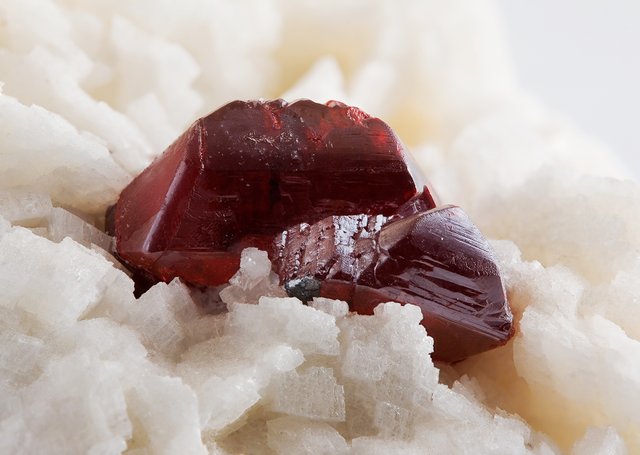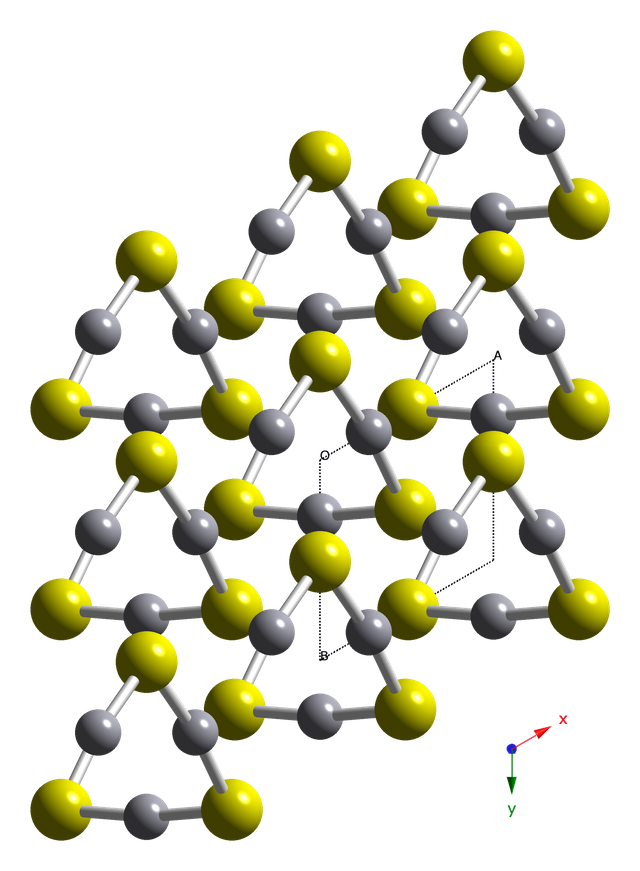Chemical of the Week #3: Cinnabar - Pretty in Poison

Cinnabar on Dolomite. It is a rather attractive stone, makes ya wonder how many people slowly lost their health due to its luster
Chemical Formula: HgS
Synonyms:
Vermillion (When Red Cinnabar is used as a pigment)
Black Cinnabar
There are two different types of Cinnabar, but the subject of this post is Red Cinnabar. It is a scarlet colored mineral comprised of Mercury and Sulfur and in chemical terms called Mercury Sulfide (HgS). It had many uses over the millennia, such as a pigment, jewelry and even used in medicine(1). The later use is pretty creepy, for Mercury as everyone knows is a toxic metal that damages the immune system, brain, heart, lungs and kidneys. Due to the toxicity of Mercury , the use of Cinnabar has been reduced to a source of Mercury which finds itself still used in many industrial applications. From what I can gather, Mercury is essentially distilled from Cinnabar by heating crushed ore in a furnace where the Mercury vaporizes. It is then condensed to a liquid in a lower temp chamber. Cinnabar is found where there has been volcanic activity, and can also form near hot springs(2)
A disturbing continuing use of Cinnabar is in Chinese Herbal Medicine as well as Ayurvedic. With the former its use dates back at least 2000 years. Fortunately, it has low water solubility and its absorption by the gastrointestinal track has been shown to be less than 0.2%, compared to methyl mercury ( >95%), which is the form found in seafood. The Chinese Ministry of Health has set a limit range of 100 to 500 mg Cinnabar a day as of 2005, yet it can still be found in levels way higher than that in some preparations(3). Even though mercury in this form is poorly absorbed, the need for Cinnabars inclusion in Chinese Herbal Medicine and Ayurveda is questionable.
Red Cinnabar has a structure of the Trigonal Crystal System, which means it has a threefold axis of rotation. Objects with a threefold axis of rotation have a structure that repeats with every 120 degree turn, like a solid equilateral triangle. You can see repeating triangles in the Red Cinnabar ball and stick model I have attached below. In the image, Sulfur is yellow and Mercury silver.

I have noticed that the word mineral gets thrown around a lot and its definition has become a bit broad. Sometimes people confuse it with a pure elemental substance. A mineral is a homogeneous solid with a ordered atomic arrangement, and generally a definite chemical composition (4).
References
(1)
https://geology.com/minerals/cinnabar.shtml
(2)
https://www.medicinenet.com/mercury_poisoning/article.htm
(3)
https://www.ncbi.nlm.nih.gov/pmc/articles/PMC2755212/
(4)
https://www.tulane.edu/~sanelson/eens211/introsymmetry.htm
Image and Photo credits:
Red Cinnabar Structure. Image Credit
By Ben Mills - Own work, Public Domain, https://commons.wikimedia.org/w/index.php?curid=10898478
Cinnabar Photo License :ttps://commons.wikimedia.org/wiki/File:Cinnabar_on_Dolomite.jpg
Congratulations @chemicalweek! You have completed the following achievement on the Steem blockchain and have been rewarded with new badge(s) :
You can view your badges on your Steem Board and compare to others on the Steem Ranking
If you no longer want to receive notifications, reply to this comment with the word
STOPDo not miss the last post from @steemitboard:
Vote for @Steemitboard as a witness to get one more award and increased upvotes!